The Parthian Battery (Baghdad Battery)
The Parthians, a nomadic Iranian tribe, created one of the greatest empires of all times during their rule over Ancient Persia and its neighbouring countries from 250 B.C. to 250 A.D. The Parthians ruled over Persia about over 500 years. They considered themselves as protectors of the rich and manifold cultures in their vast empire. Numerous historical documents such as coins(fig1), drinking horns(fig2) and potsherds(fig3) discovered in the course of centuries testify to the great Parthian civilization. The most characteristic coin of the Parthians is the silver drachm with weight (about 4 grams).
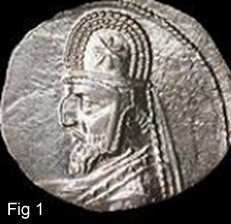
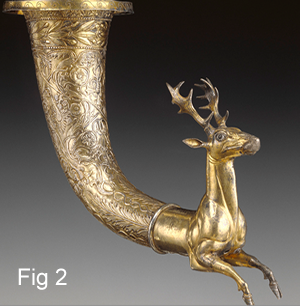
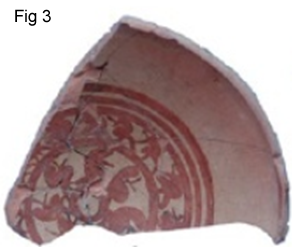
Archaeological excavation carried out at Ctesiphon by various expedition teams during 1930 and 1936 brought to light curious objects such as earthen ware Jars, copper cylinders, and iron rods, which were until April 2003 part of the holdings of Iraq National Museum in Baghdad. In 1936 a clay jar,14 cm high and 8 cm wide, a copper cylinder and narrow iron rod (fig4) were found at Khujut Rabbou;a near Ctesiphon. Science the region was known to have been settled by the parthians, the finds were attributed to the Parthian Empire. There have been a number of reconstructions of this ancient device in western laboratories and universities such as figure 5.
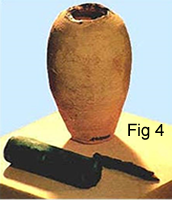
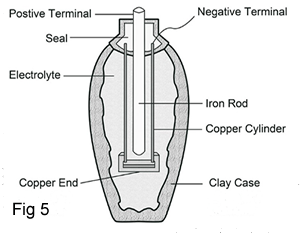
The real purpose of the objects found at Khujt Rabbou'a was unknown. The Austrian archaeologist Wilhelm Koenig, who first described them, claimed that they were parts of an electric battery. Later, he suggested that several such devices connected together would supply sufficient electric power, and would have been used by parthin goldsmiths to deposit gold layers onto base metal art works to improve their appearance and enhance their apparent value.
Later, when a replica of the 'battery' was filled with copper sulphate, vinegar or even fermented grapefruit juice as an electrolytic, it was found that it could in fact generate a certain amount of voltage. Based on this observation, it was speculated that crushed kernels of bitter almond or sour cherry, a little brewer's yeast, water, heat, and gold dust were all ingredients the Parthian goldsmiths needed to prepare gold cyanide solutions for electroplating gold by means of such batteries.
However, not all scientists accepted the idea that the fine of Khujut Rabbou'a had been used by Parthian goldsmiths as an electric power source to plate gold coating. Some of them believed and still believe that perhaps the battery was used as a ready source of analgesic electricity, or for similar therapeutic purpose such as imparting electric shocks to patients. Others thought it was more likely that the clay Jar and its contents were used in magical rituals. There were also researchers who refused the power source hypothesis categorically and argued that such clay jars may have been containers for blessings or incantations, which were written on organic materials and placed inside them.
Ever since the discovery, that is during the last sixty years scientists from all over the world have performed extensive experiments using replicas of the findings to confirm or to refuse Koenig's theory. This article is from the book of The Parthian Battery written by Prof.Dr N.Kanani in English and Germany Language. It is recommended to read the book for more Information.
The Parthian Battery
Author: Nasser Kanani
Eugen Leuze Verlag, Bad Saulgau,Germany,2004

